- Clone
- A3.6B10.G1 (See other available formats)
- Regulatory Status
- RUO
- Other Names
- Cytotoxic T-Lymphocyte Antigen 4 (CTLA4)
- Isotype
- Mouse IgG2a, κ
- Ave. Rating
- Submit a Review
- Product Citations
- 1 publications
| Cat # | Size | Price | Save |
|---|---|---|---|
| 525401 | 50 µg | ¥29,920 | |
| 525402 | 500 µg | ¥104,500 |
CTLA-4 (Cytotoxic T-Lymphocyte Antigen 4), also known as CD152, is a protein that plays an important regulatory role in the immune system. CTLA-4 is expressed on the surface of helper T cells and transmits an inhibitory signal to T cells. Mutations in the CTLA-4 gene have been associated with various autoimmune diseases, such as systemic lupus erythematosus, insulin-dependent diabetes mellitus, and other autoimmune diseases.
An identified novel transcript of the CTLA-4 gene that may represent a native soluble form of CTLA-4 (sCTLA-4) showed that eleven of twenty patients with autoimmune thyroid disease (ATD) had a high concentration of sCTLA-4, whereas only one of thirty apparently healthy volunteers contained measurable levels. sCTLA-4 immunoreactivity was inhibited by its binding to B7.1, suggesting that sCTLA-4 is a functional receptor. sCTLA-4 also plays a role in the initial immune response to infection of immune cells by HIV, along with the CD-1 pathway and others.
Product Details
- Verified Reactivity
- Human
- Antibody Type
- Monoclonal
- Host Species
- Mouse
- Immunogen
- Extracellular domain of human CTLA-4 and human IgG1 Fc fusion protein
- Formulation
- Phosphate-buffered solution, pH 7.2, containing 0.09% sodium azide.
- Preparation
- The antibody was purified by affinity chromatography.
- Concentration
- 0.5 mg/ml
- Storage & Handling
- The antibody solution should be stored undiluted between 2°C and 8°C.
- Application
-
ELISA Capture - Quality tested
- Recommended Usage
-
Each lot of this antibody is quality control tested by ELISA assay. For ELISA capture applications, a concentration range of 1-4 µg/mL is recommended. To obtain a linear standard curve, serial dilutions of human CTLA-4 recombinant protein ranging from 2500 to 39 pg/mL are recommended for each ELISA plate. It is recommended that the reagent be titrated for optimal performance for each application.
- Application Notes
-
ELISA Capture: The purified A3.6B10.G1 antibody is useful as the capture antibody in a sandwich ELISA assay, when used in conjunction with the biotinylated L3D10 antibody (Cat. No. 349911) as the detection antibody and recombinant human CTLA-4 (Cat. No. 591909) as the standard.
Note: For testing human soluble CTLA-4 in serum, plasma or cell culture supernatant, LEGEND MAX™ Human Soluble CTLA-4 ELISA Kit with Pre-coated Plates (Cat. No. 437407 & 437408) are specially developed and recommended.
This clone has been tested in-house and determined to not be suitable for applications in immunohistochemistry of frozen or paraffin-embedded tissue sections (IHC-F or IHC-P). - Product Citations
-
- RRID
-
AB_2562988 (BioLegend Cat. No. 525401)
AB_2563003 (BioLegend Cat. No. 525402)
Antigen Details
- Structure
- Ig superfamily, 33 kD
- Distribution
-
Activated T cells and B cells
- Function
- Negative regulator of T cell activation
- Interaction
- Antigen presenting cells, such as dendritic cells
- Ligand/Receptor
- B7-1 (CD80), B7-2 (CD86)
- Cell Type
- T cells, B cells, Dendritic cells, Tregs
- Biology Area
- Immunology, Inhibitory Molecules
- Molecular Family
- CD Molecules, Immune Checkpoint Receptors
- Antigen References
-
1. Barclay N, et al. The Leukocyte Antigen FactsBook. Academic Press Inc. San Diego.
2. Kuiper H, et al. 1995. J. Immunol. 155:1776.
3. Lindsten T, et al. 1993. J. Immunol. 151:3489.
4. Morton P, et al. 1996. J. Immunol. 156:1047. - Gene ID
- 1493 View all products for this Gene ID
- UniProt
- View information about CD152 on UniProt.org
Related FAQs
Other Formats
View All CD152 (CTLA-4) Reagents Request Custom Conjugation| Description | Clone | Applications |
|---|---|---|
| Purified anti-human CD152 (CTLA-4) | A3.6B10.G1 | ELISA Capture |
Customers Also Purchased
Compare Data Across All Formats
This data display is provided for general comparisons between formats.
Your actual data may vary due to variations in samples, target cells, instruments and their settings, staining conditions, and other factors.
If you need assistance with selecting the best format contact our expert technical support team.




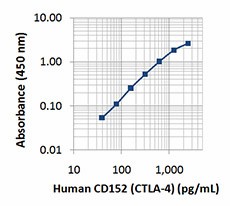





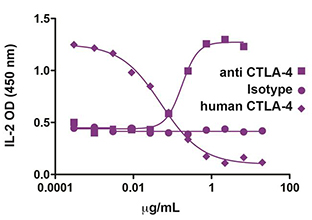
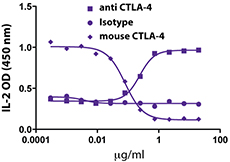
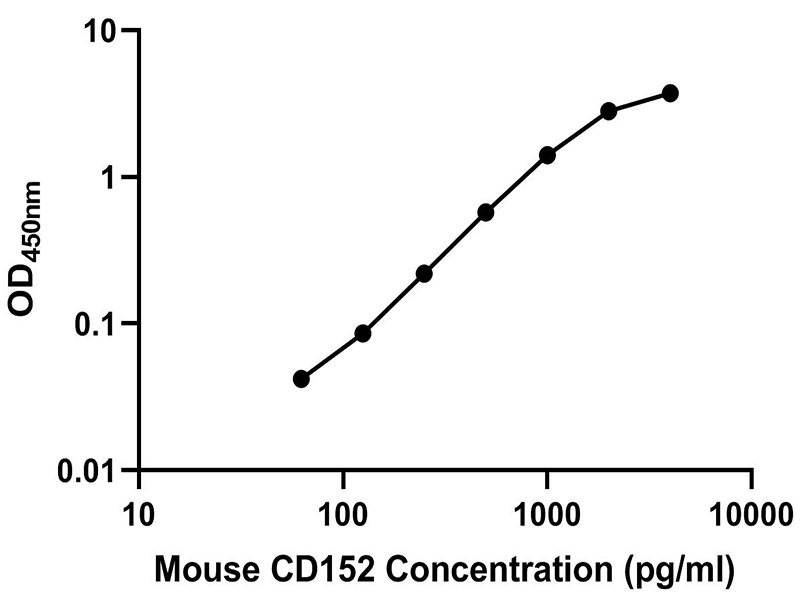
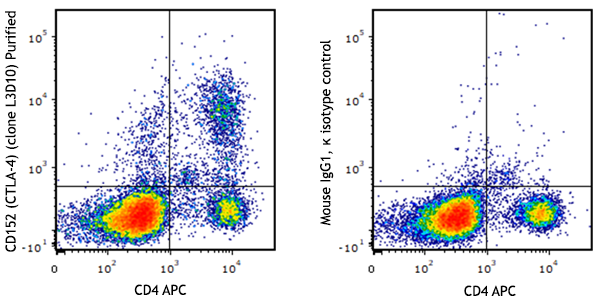








Follow Us